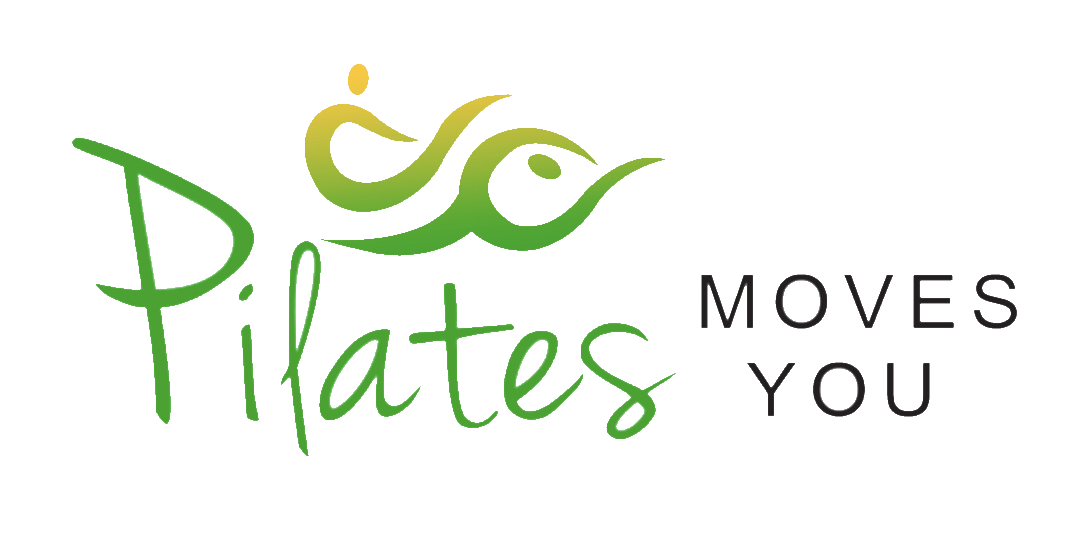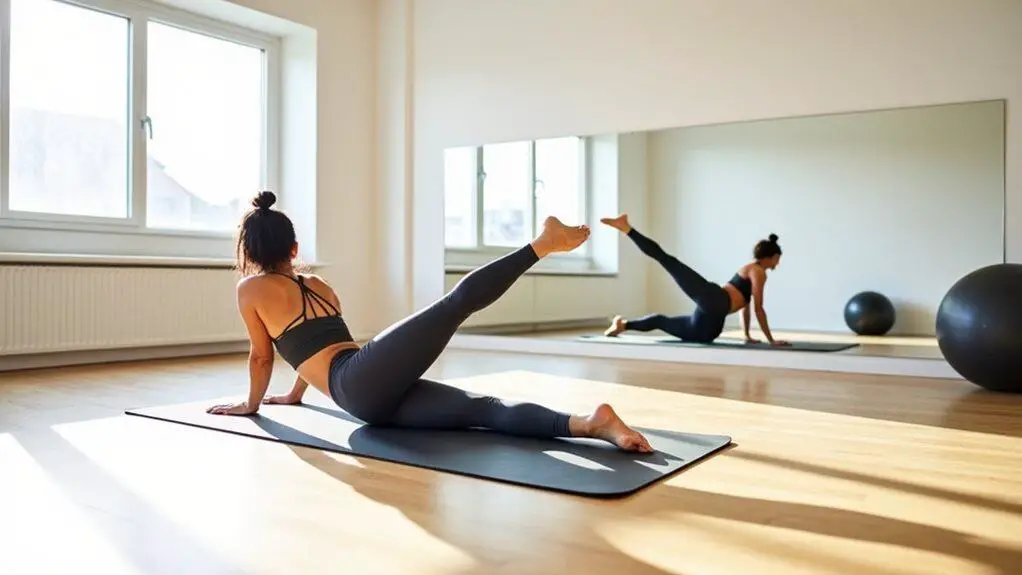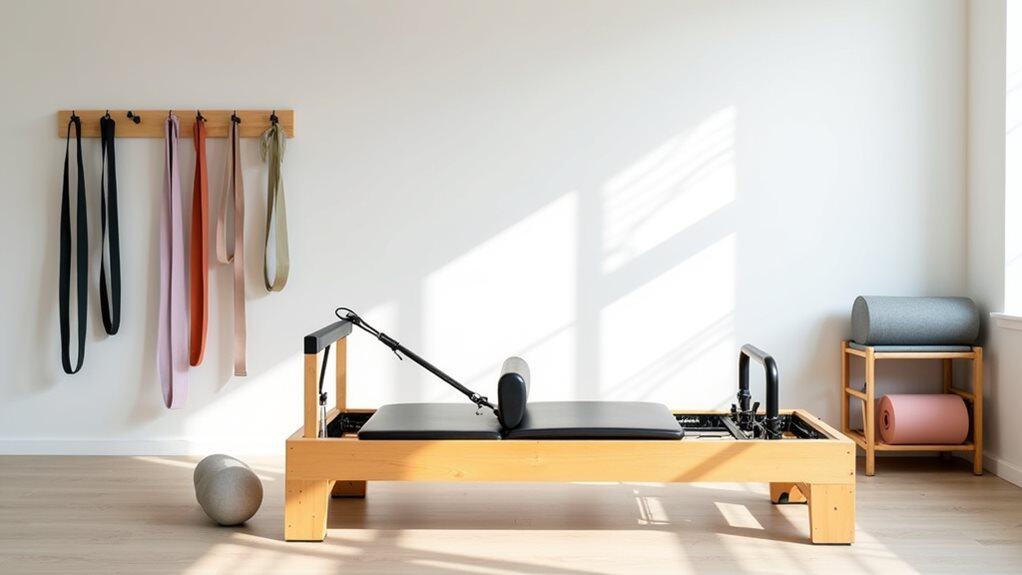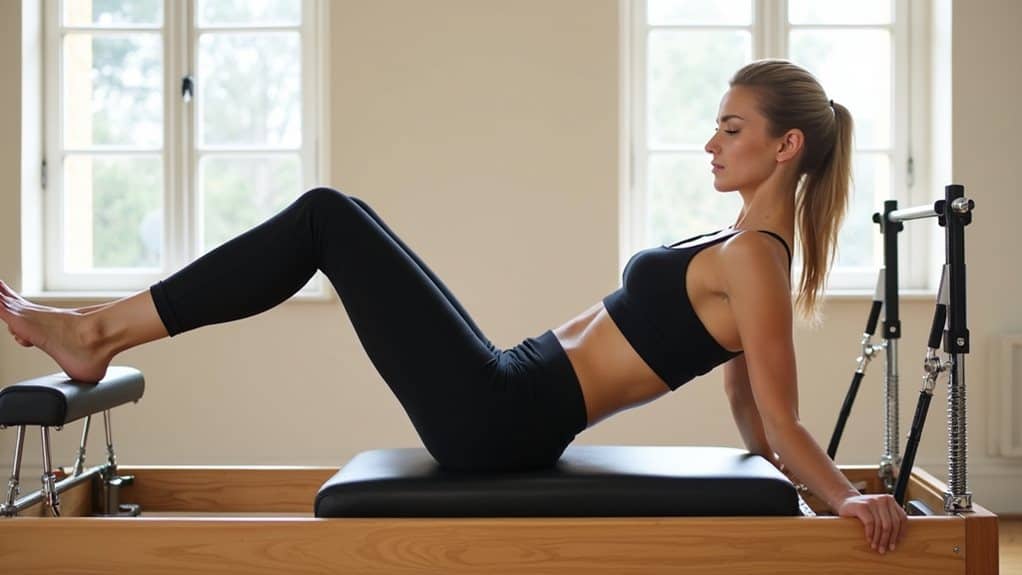Welcome to our article on Pilates for athletes! If you’re an athlete, you know that injuries can be a common occurrence. Whether it’s a sprained ankle, tight muscles or even a more serious injury, Pilates can be a great option to help with both injury recovery and prevention.
Pilates is a form of exercise that focuses on improving flexibility, strength, and balance. It can help to build core strength, which is important for many athletes, and can also aid with injury rehabilitation.
Understanding Pilates for Athletes
Pilates is a form of exercise that emphasises the importance of body control, alignment, and breathing. This low-impact workout can be incredibly beneficial for athletes, both in injury prevention and rehabilitation, as it strengthens and lengthens muscles, improves flexibility, and promotes balance and core stability.
Athletes are particularly prone to injuries due to the physical demands placed on their bodies. Pilates can help in injury prevention by improving body mechanics, reducing muscle imbalances, and enhancing range of motion, ultimately decreasing the risk of injury.
How Pilates Works for Athletes
Unlike traditional workouts that focus on isolated muscle groups, Pilates concentrates on the entire body, connecting the mind and body to create a full-body workout. The exercises performed in Pilates emphasise control, precision, and fluidity of movement, which can help athletes improve their performance by increasing body awareness and concentration.
Additionally, Pilates can be tailored to the needs and goals of each athlete, making it a flexible and versatile form of exercise. Whether an athlete is recovering from an injury or looking to enhance their athletic performance, Pilates can be modified to meet their specific needs.
Pilates vs. Traditional Rehabilitation
While traditional rehabilitation methods focus on specific injuries and target affected areas, Pilates takes a more holistic approach by strengthening the body as a whole. Traditional rehabilitation can be effective but often lacks the engagement and enjoyment that Pilates provides.
Pilates can be a lower-impact form of exercise compared to traditional rehabilitation, making it suitable for athletes recovering from more serious injuries or surgeries. With Pilates, athletes can improve their overall physical health and prevent future injuries, instead of focusing solely on treating existing injuries.
| Traditional Rehabilitation | Pilates |
|---|---|
| Focuses on specific injuries and affected areas | Takes a holistic approach by strengthening the body as a whole |
| Can lack engagement and enjoyment | Can be a more engaging and enjoyable form of rehabilitation |
| Can be high-impact and unsuitable for certain injuries | Can be a lower-impact form of exercise suitable for athletes recovering from injuries or surgeries |
“Pilates is not only for rehabilitation but also for injury prevention, which is why it’s an excellent choice for athletes. By improving overall body strength, balance and flexibility, athletes are more likely to avoid injuries in the future.”
Donna Finnie, certified Pilates instructor.
Overall, Pilates can be a valuable addition to an athlete’s rehabilitation plan and can also help to prevent future injuries. With its focus on overall body strength and flexibility, Pilates offers a more engaging and enjoyable alternative to traditional rehabilitation methods.
Common Injuries for Athletes and How Pilates Can Help
As an athlete, injuries can be a common occurrence. Whether it’s a strain, sprain, or more severe injury, they can all impact your ability to perform at your best. Pilates can be an effective tool for injury prevention and recovery, as it can help to strengthen the muscles and joints, improve flexibility and balance, and promote better body alignment.
Some of the most common injuries that athletes face include:
| Injury Type | Description |
|---|---|
| Strains | A strain occurs when a muscle or tendon is stretched or torn, often resulting in pain, swelling, and limited mobility. |
| Sprains | A sprain happens when a ligament is stretched or torn, leading to pain, swelling, and difficulty moving the affected joint. |
| Tendonitis | Tendonitis is the inflammation or irritation of a tendon, leading to pain and tenderness in the affected area. |
| ACL Injuries | An ACL injury is a tear of the anterior cruciate ligament, often caused by sudden stops or changes in direction, resulting in pain, swelling, and instability of the knee. |
No matter what type of injury you’re facing, Pilates can be a beneficial tool for both recovery and prevention. Pilates exercises can be tailored to target specific areas of the body and help to strengthen weakened muscles. This can promote better joint stability and reduce the risk of future injury.
For example, Pilates can help to improve mobility and strength in the hips, which can be particularly beneficial for runners. It can also be used to strengthen the core muscles, which can help to improve posture and reduce the risk of back injuries.
Incorporating Pilates into your overall rehabilitation plan can also help to promote better body awareness and alignment, which can be especially important for athletes who may be more prone to injuries due to overuse or repetitive movements.
How Pilates Can Help with Specific Injuries
Here are some specific examples of how Pilates can be used to aid in the recovery of common athletic injuries:
- Back Injuries: Pilates can be used to strengthen the muscles that support the spine, improve flexibility in the hips and hamstrings, and promote better posture and alignment.
- Knee Injuries: Pilates exercises can be used to improve strength in the hip and thigh muscles, which can help to provide better support for the knee joint. It can also be used to improve flexibility in the hamstrings and calves, which can reduce stress on the knee.
- Shoulder Injuries: Pilates can be used to strengthen the muscles that support the shoulder joint, improve flexibility in the chest and upper back, and promote better posture and alignment.
Incorporating Pilates into your overall rehabilitation plan can help to speed up the healing process and reduce the risk of future injuries. However, it’s important to work with a qualified instructor who can tailor the exercises to your specific needs and limitations.
Pilates Exercises for Injury Recovery and Prevention
Pilates is a great way for athletes to prevent and recover from injuries. Incorporating specific Pilates exercises into your routine can help increase flexibility, strength, and balance. Here are some exercises that can be used for injury recovery and prevention:
1. The Hundred
The Hundred is a great exercise for strengthening the core, which is essential for injury prevention. Start by lying on your back with your knees bent, then lift your head and shoulders off the mat. Begin pumping your arms up and down while keeping your core engaged. Try to complete ten sets of ten pumps, or a total of one hundred.
2. Side Leg Lift Series
The Side Leg Lift Series targets the hips and legs, which can be prone to injury in athletes. Begin by lying on your side with your legs straight. Lift your top leg towards the ceiling and then lower it back down. Repeat ten times and then switch sides.
3. Roll Up
The Roll Up is a great exercise for increasing flexibility in the spine and hamstrings. Start by lying on your back with your arms above your head. Slowly roll your body up, one vertebra at a time, until you are sitting up straight. Then roll back down to the starting position. Repeat ten times.
4. Single Leg Circles
Single Leg Circles target the hip flexors and improve stability in the hips. Lie on your back with your legs extended straight up towards the ceiling. Circle one leg clockwise for five repetitions, then switch and circle the other leg counterclockwise for five repetitions.
5. Spine Stretch
The Spine Stretch is a great exercise for improving flexibility in the spine. Sit on the mat with your legs straight out in front of you. Inhale as you reach your arms above your head, then exhale as you reach forward towards your toes. Hold for a few seconds and then repeat ten times.
These are just a few examples of Pilates exercises that can be used for injury recovery and prevention. Incorporating these exercises into your routine can help you stay healthy, strong, and injury-free.
Pilates for Improved Flexibility
One of the many benefits of Pilates is improved flexibility, which is essential for athletes looking to prevent injuries and improve performance. Pilates exercises focus on stretching and lengthening muscles, helping to increase range of motion and reduce stiffness.
Here are some specific Pilates exercises that can be used to improve flexibility:
| Exercise | Description |
|---|---|
| The Swan | Lie on your stomach with your hands at your sides. Slowly raise your head and chest off the ground while keeping your shoulders down. Hold this position for a few seconds before lowering back down. |
| The Roll-Up | Lie on your back with your arms above your head. Slowly lift your head and roll up one vertebra at a time until you’re sitting up. Roll back down with the same control. |
| The Spine Stretch | Sit with your legs straight out in front of you and your arms reaching forward. Slowly round your spine and reach towards your toes. Hold this position for a few seconds before sitting back up. |
By incorporating Pilates into your regular fitness routine, you can improve your flexibility and reduce your risk of injury. Remember to always warm up before exercising and to listen to your body to avoid overstretching or causing any further damage to your muscles.
Pilates for Improved Strength and Balance
One of the key benefits of Pilates for athletes is improved strength and balance. By engaging the body’s core muscles, Pilates exercises can help to build overall strength and stability. Pilates also emphasizes proper posture and alignment, which can improve balance and coordination.
Here are some Pilates exercises that are particularly effective for improving strength and balance:
| Pilates Exercise | Benefits |
|---|---|
| Single Leg Circle | Improves hip strength and flexibility, and balance. |
| Roll Up | Strengthens the core and improves spinal flexibility and control. |
| Teaser | Challenges core strength and improves balance and stability. |
By incorporating these exercises into your training routine, you can improve your overall strength and balance, which can help you to perform better in your sport and reduce the risk of injury.
Pilates for Athletic Rehabilitation
One of the key benefits of Pilates for athletes is its ability to aid in the rehabilitation process following an injury. Pilates can not only help to prevent future injuries, but it can also be used as part of an overall rehabilitation plan to help athletes recover from existing injuries.
Unlike traditional rehabilitation methods, which may focus solely on the injured area, Pilates takes a whole-body approach, helping athletes to improve their overall strength, flexibility, and balance.
By incorporating Pilates into their rehabilitation plan, athletes can work on rebuilding their strength and flexibility in a controlled, low-impact environment. This can help to reduce the risk of re-injury and provide a safe way for athletes to ease back into their training regimen.
Pilates for Injury Prevention
In addition to aiding in injury recovery, Pilates can also be used for injury prevention. By improving overall body strength, flexibility, and balance, athletes can reduce their risk of sustaining certain injuries.
Pilates can also help to correct any imbalances in an athlete’s body, which can lead to a more even distribution of force, reducing the risk of overuse injuries.
By incorporating Pilates into their training regimen, athletes can help to prevent injuries before they occur, keeping them in top physical condition for their sport.
Pilates for Athletes: Frequently Asked Questions
If you’re an athlete looking for a way to prevent injuries and improve your overall fitness, Pilates may be a great option for you! Here are some frequently asked questions about Pilates for athletes:
Who can benefit from Pilates?
Anyone can benefit from Pilates, regardless of their fitness level or athletic ability. Pilates can help improve strength, flexibility, balance, and body awareness, making it a great addition to any workout routine.
How often should I practice Pilates?
The frequency of your Pilates practice will depend on your personal goals and schedule. Ideally, it is recommended to practice Pilates at least 2-3 times a week to see results. However, even practicing Pilates once a week can have benefits.
What should I expect during a Pilates session?
During a Pilates session, you’ll be guided through a series of exercises that focus on core strength and stability. Expect to use equipment such as a reformer, mat, or other props. Your instructor will guide you through proper form and technique, and may even incorporate some relaxation and stretching exercises at the end of the session.
Can Pilates help prevent injuries?
Yes! Pilates can be a great tool for injury prevention, as it focuses on building core strength and improving posture and alignment. By strengthening your body and improving your overall movement patterns, you may be less likely to experience common sports injuries such as strained muscles or joint pain.
Is Pilates suitable for rehabilitation after an injury?
Yes, Pilates can be a great option for rehabilitation after an injury. However, it’s important to consult with your healthcare provider before starting any new exercise routine. A Pilates instructor can work with you and your healthcare team to develop a safe and effective rehabilitation plan.
Can I do Pilates at home?
Yes! While it can be helpful to work with a certified Pilates instructor, there are many Pilates exercises that can be done at home with little to no equipment. However, it’s important to learn proper form and technique to prevent injury and ensure you’re getting the most benefit from your practice.
Hopefully, this FAQ has answered some of your questions about Pilates for athletes. Don’t hesitate to talk to a certified Pilates instructor or your healthcare provider if you have any additional questions or concerns.




